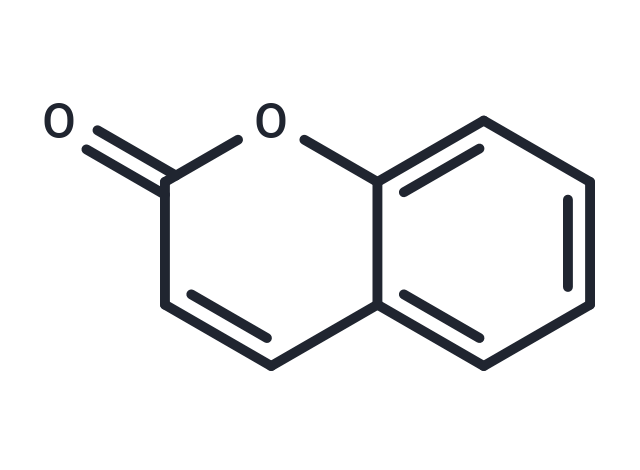Shopping Cart
- Remove All
 Your shopping cart is currently empty
Your shopping cart is currently empty

Coumarin is a chemical compound/poison found in many plants, notably in high concentration in the tonka bean, woodruff, and bison grass. It has clinical value as the precursor for several anticoagulants, notably warfarin.

| Pack Size | Price | Availability | Quantity |
|---|---|---|---|
| 50 mg | $33 | In Stock | |
| 1 mL x 10 mM (in DMSO) | $50 | In Stock |
| Description | Coumarin is a chemical compound/poison found in many plants, notably in high concentration in the tonka bean, woodruff, and bison grass. It has clinical value as the precursor for several anticoagulants, notably warfarin. |
| In vitro | Coumarin is a fragrant organic chemical compound in the benzopyrone chemical class, which is a colorless crystalline substance in its standard state. Coumarin is a naturally occurring constituent of many plants and essential oils, including tonka beans, sweet clover, woodruff, oil of cassia, and lavender. Coumarin is a member of a class of compounds called benzopyrones. Coumarin compounds have been used to treat such diverse ailments as cancer, bums, brucellosis, and rheumatic disease, and they have been used as antispasmodics. Although coumarin itself has no anticoagulant properties, it is transformed into the natural anticoagulant dicoumarol by a number of species of fungi. This occurs as the result of the production of 4-hydroxycoumarin, then further into the actual anticoagulant dicoumarol, a fermentation product and mycotoxin. This substance is responsible for the bleeding disease known historically as 'sweet clover disease' in cattle eating moldy sweet clover silage.[1] |
| Molecular Weight | 146.14 |
| Formula | C9H6O2 |
| Cas No. | 91-64-5 |
| Smiles | O=C1OC2=CC=CC=C2C=C1 |
| Relative Density. | Ca. 0.935 kg/m3. Temperature:20 °C. |
| Storage | Powder: -20°C for 3 years | In solvent: -80°C for 1 year | Shipping with blue ice. | |||||||||||||||||||||||||||||||||||
| Solubility Information | DMSO: 45 mg/mL (307.92 mM), Sonication is recommended. H2O: < 1 mg/mL (insoluble or slightly soluble) Ethanol: 28 mg/mL (191.6 mM), Sonication is recommended. | |||||||||||||||||||||||||||||||||||
Solution Preparation Table | ||||||||||||||||||||||||||||||||||||
Ethanol/DMSO
| ||||||||||||||||||||||||||||||||||||

Copyright © 2015-2025 TargetMol Chemicals Inc. All Rights Reserved.